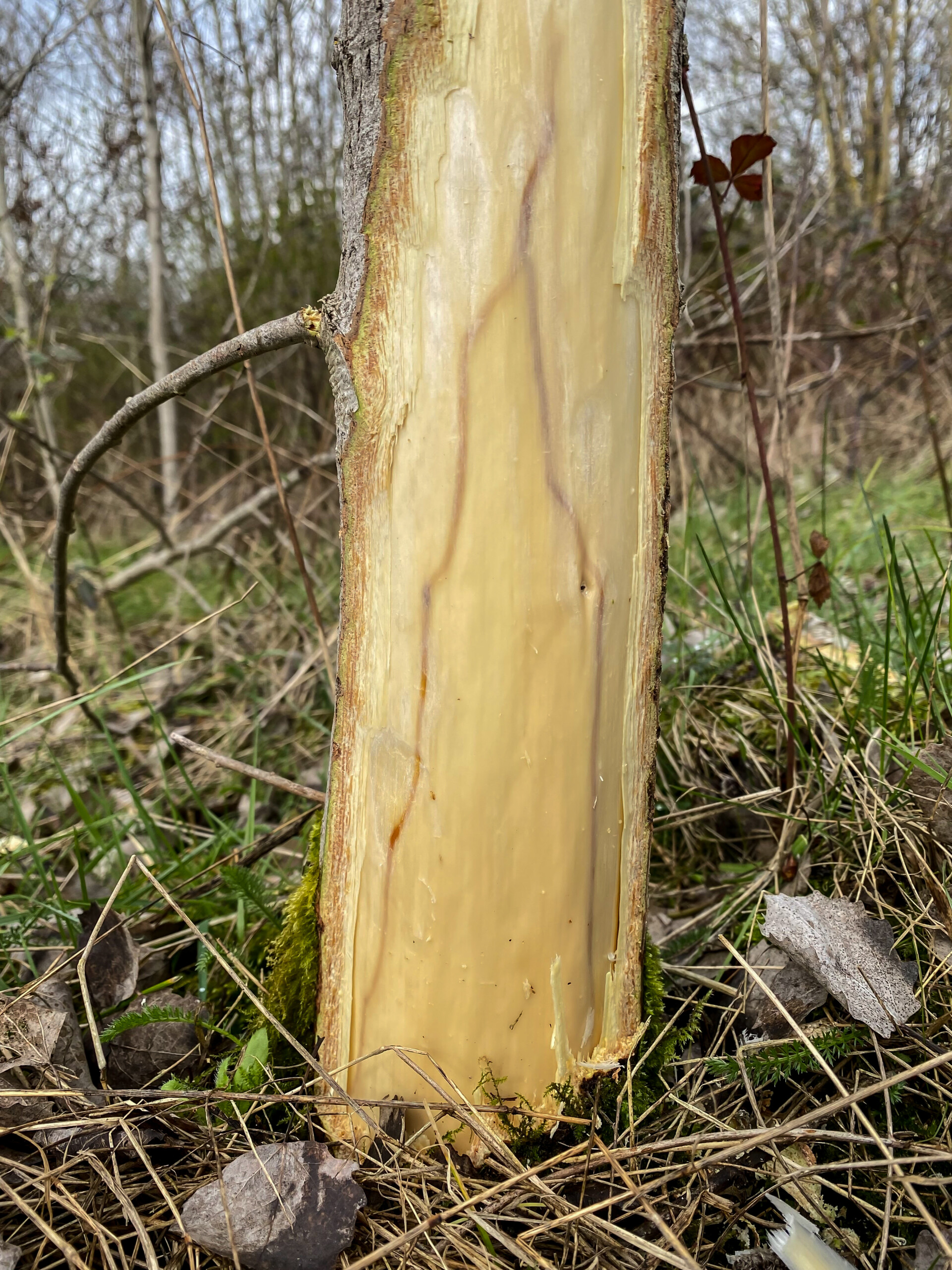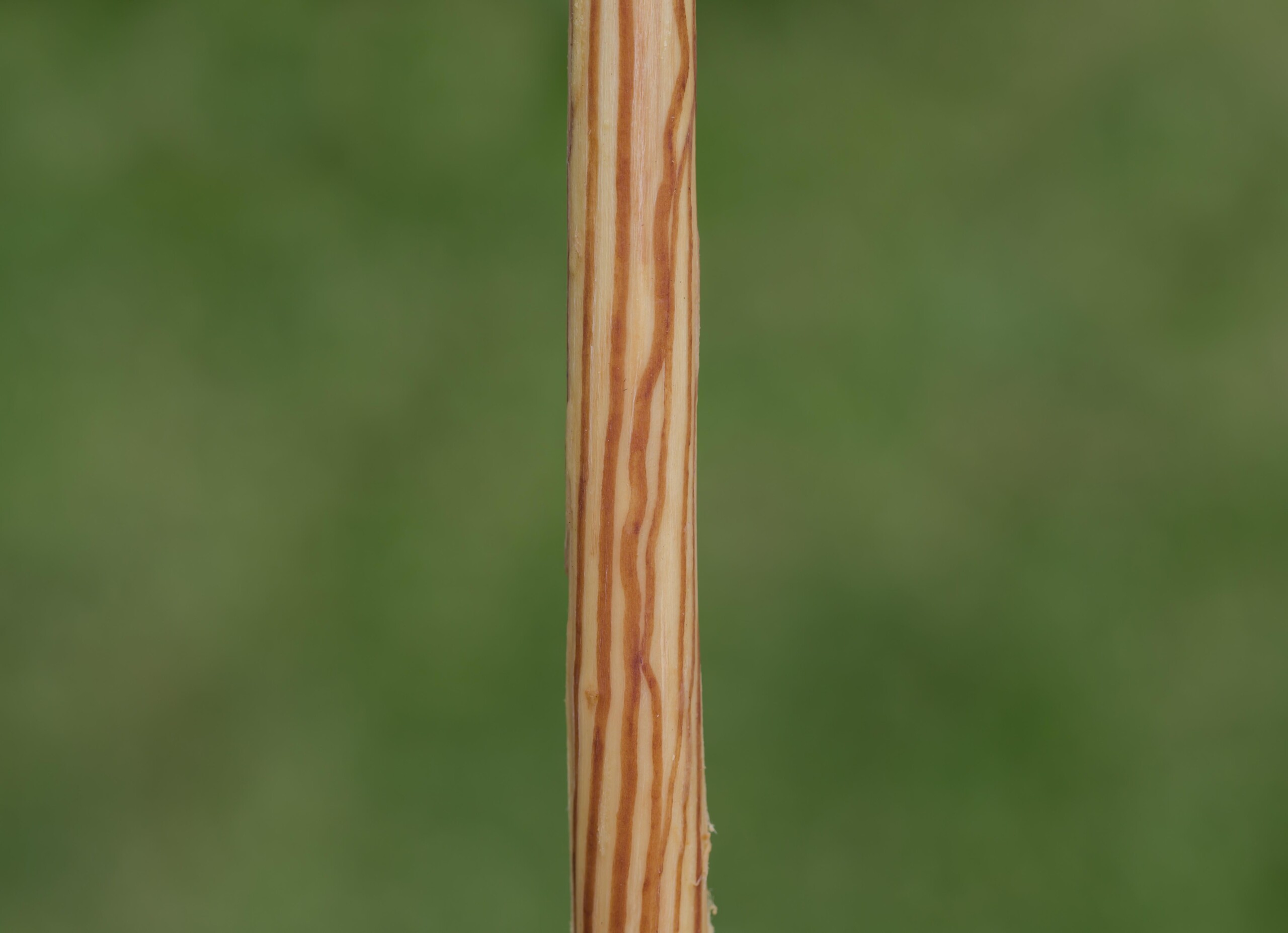The larvae of Phytobia species are known to be cambium-miners [in reality, they mine the young xylem], feeding internally in twigs and trunks of trees. The larva leaves the tree to pupariate in the ground. There is no external evidence that a tree is affected.
However, feeding tracks are often visible under the bark whilst medullary spot/’pith flecks’ can be found if a cross section of a trunk/branch is examined. The images below show the feeding tracks of Phytobia cambii (Hendel, 1931) on a Salix sp. and Populus tremula trunk;

Previous years feeding tracks of Phytobia cambii (Hendel, 1931) in Salix © Barry P. Warrington

Previous years feeding tracks of Phytobia cambii (Hendel, 1931) on Populus tremula © Barry P. Warrington
When mined stems are seen in cross-section, the medullary spots/’pith flecks’ can be seen in the wood. Below is a cross-section of a Prunus spinosa stem, showing the medullary spots of Phytobia cerasiferae;

Previous years medullary spots/’pith flecks’ caused by Phytobia cerasiferae larva feeding on Prunus spinosa © Barry P. Warrington
The full extent of a mined stem or branch becomes clear upon de-barking. Below is a stem of Prunus spinosa which has had the outer bark removed, revealing the current year feeding tracks of Phytobia cerasiferae larva. As the larva grows, the width of the feeding track increases;

Current year feeding tracks of Phytobia cerasiferae on de-barked Prunus spinosa stem © Barry P. Warrington
Permission was granted from relevant site owners to carry out the debarking.


